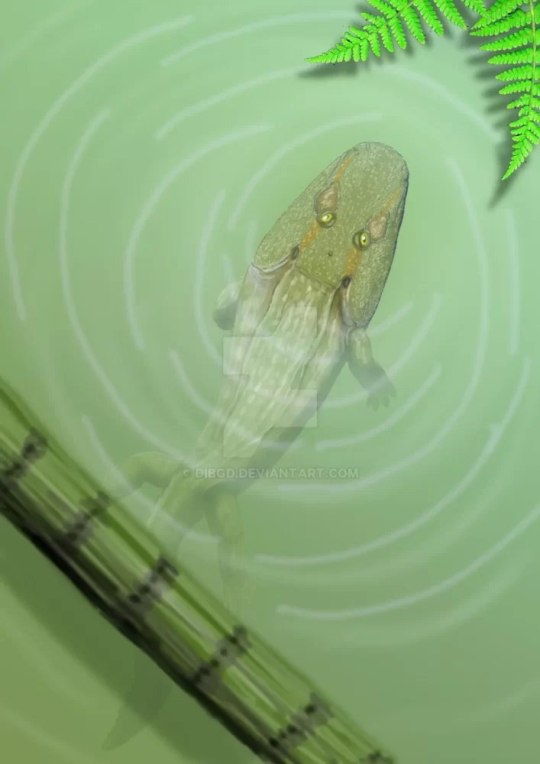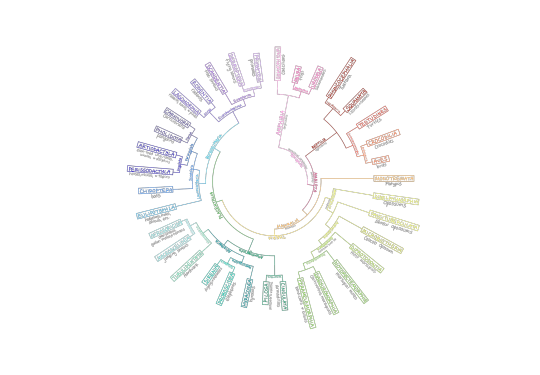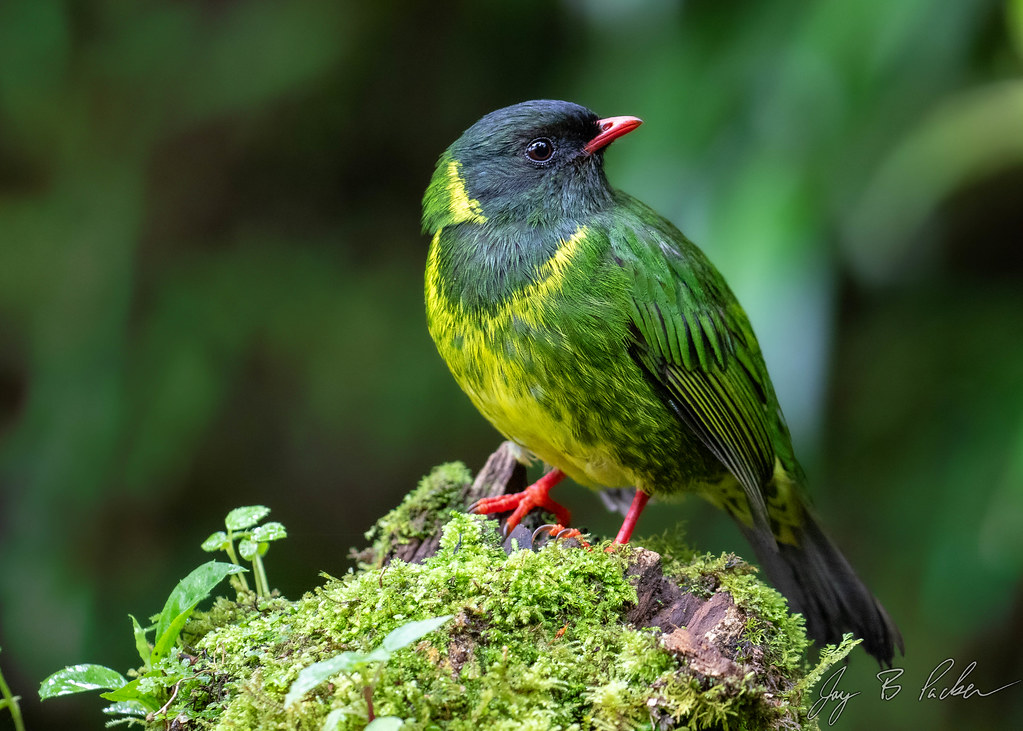#Tetrapoda
Text

Great horned owl (Bubo virginianus)
Photo by Dan Weisz
#great horned owl#bubo virginianus#bubo#striginae#strigidae#strigiformes#neognathae#aves#archosauria#reptilia#tetrapoda#vertebrata#chordata
627 notes
·
View notes
Video
Munchique Wood-Wren by Jay Packer
Via Flickr:
Endemic to the western Andes of Colombia, this highly sought-after wood-wren is found at higher elevations than the similar Gray-breasted Wood-Wren. Montezuma Road, Tatamá National Park, Colombia
#Animalia#Amniota#Aves#Reptilia#Vertebrata#Archosauromorpha#Chordata#Diapsida#Tetrapoda#Munchique Wood-Wren#Colombia#Troglodytidae (Wrens)#Passeriformes#South America#Animals#Birds#Henicorhina negreti#flickr
12 notes
·
View notes
Text
Megalocephalus pachycephalus

Megalocephalus was a genus of early tetrapod from the Late Carboniferous. Its type species is M. pachycephalus. Its second species is M. lineolatus. The known specimens of M. pachycephalus were found in multiple sites in England, Ireland, and Scotland; while M. lineolatus was found in a quarry in Ohio, U.S. Both species were discovered in the late 1800s and had much material referred to and from other genera quite frequently for several decades.
The genus name Megalocephalus means "big head," while pachycephalus means "thick head."
There was a third species named M. brevicornis in 1947 based on some original fossils referred to as "Pteroplax" brevicornis, however, the original holotype was poorly described and destroyed in a museum fire in 1909.
Megalocephalus is considered a member of Baphetidae, a small family of early tetrapod amphibians. It is not entirely clear how closely related the members of this family are due to some striking differences between them, but M. pachycephalus is closely related to sister taxon Kyrinion, more so than it is to M. lineolatus. Both species were large, estimated to reach upwards of 1.5m from head to tail. Like other baphetids, the skull had an elongation of the eye socket, which is thought to have been either a location for a salt gland or extra jaw muscle attachments. Its long, sharp teeth indicate it hunted fish.
Original paper: M. pachycephalus original description; M. lineolatus original description (referred to as Leptophractus)
Wikipedia article: https://en.wikipedia.org/wiki/Megalocephalus
#tetrapods#stem tetrapod#paleoart#paleontology#artwork#original art#human artist#megalocephalus#baphetidae#tetrapoda#obscure fossil tetrapods
7 notes
·
View notes
Text

Baphetes
Baphetes — вимерлий рід тетрапод з Пеннінської кам’яновугільної групи та Парротського вугілля, Англія, формації Джоггінс у Новій Шотландії та формації Кладно в Чехії. Вперше названий Річардом Оуеном (Richard Owen) у 1854 році. Типовий вид — B. planiceps.
Повний текст на сайті "Вимерлий світ":
https://extinctworld.in.ua/baphetes/
#baphetes#tetrapod#england#scotland#great britain#czech#carboniferous#paleoart#tetrapoda#paleontology#prehistoric#animals#united kingdom#ua#палеоарт#палеонтологія#illustration#article#extinct#digital art#sciart#українська мова#україна#мова#ukraine#ukrainian#art#daily#science
15 notes
·
View notes
Text

#biology#diagrams#evolutionary biology#phylogeny#phylogenetic tree#vertebrates#vertebrata#chordates#chordata#tetrapods#tetrapoda#amphibians#amphibia#reptiles#reptilia#birds#aves#mammals#mammalia#animals#marsupials#marsupialia#theria#placentalia#amniotes#amniota
2 notes
·
View notes
Text
found a decapitated wild rabbit in a neighbor’s yard, pics under the cut

#chordata#sarcopterygii#tetrapoda#amniota#synapsida#mammalia#theria#eutheria#boreoeutheria#euarchontoglires#glires#lagomorpha#leporidae#ok that’s enough clades#won’t bother with all those in the future just having fun with them#oh also#animal death#that guy is super dead
0 notes
Text



Today's tetrapod mammal: Gundi. They're closely related to porcupines, compared to other rodents. Remember that humans are tetrapod mammals too!
#rodentia#gundi#hystricomorpha#eutheria#mammalia#tetrapod#tetrapoda#sarcoptyregii#sarcoptyregii are lobe-finned fishes AND terrestrial vertebrates#metazooa#metazoa
0 notes
Note
Birds are class Aves.
Sure, under Linnaean taxonomy. But, well,
A) Linnaeus was a eugenecist so his scientific opinions are suspect and his morality is awful
B) he didn't know about evolution
C) he didn't know about prehistoric life
so his classification system? Sucks ass. It doesn't work anymore. It no longer reflects the diversity of life.
Instead, scientists - almost across the board, now - use Clades, or evolutionary relationships. No rankings, no hierarchies, just clades. It allows us to properly place prehistoric life, it removes our reliance on traits (which are almost always arbitrary) in classifying organisms, and allows us to communicate the history of life just by talking about their relationships.
So, for your own edification, here's the full classification of birds as we currently know it, from biggest to smallest:
Biota/Earth-Based Life
Archaeans
Proteoarchaeota
Asgardians (Eukaryomorphans)
Eukaryota (note: Proteobacteria were added to an asgardian Eukaryote to form mitochondria)
Amorphea
Obazoa
Opisthokonts
Holozoa
Filozoa
Choanozoa
Metazoa (Animals)
ParaHoxozoa (Hox genes show up)
Planulozoa
Bilateria (all bilateran animals)
Nephrozoa
Deuterostomia (Deuterostomes)
Chordata (Chordates)
Olfactores
Vertebrata (Vertebrates)
Gnathostomata (Jawed Vertebrates)
Eugnathostomata
Osteichthyes (Bony Vertebrates)
Sarcopterygii (Lobe-Finned Fish)
Rhipidistia
Tetrapodomorpha
Eotetrapodiformes
Elpistostegalia
Stegocephalia
Tetrapoda (Tetrapods)
Reptiliomorpha
Amniota (animals that lay amniotic eggs, or evolved from ones that did)
Sauropsida/Reptilia (reptiles sensu lato)
Eureptilia
Diapsida
Neodiapsida
Sauria (reptiles sensu stricto)
Archelosauria
Archosauromorpha
Crocopoda
Archosauriformes
Eucrocopoda
Crurotarsi
Archosauria
Avemetatarsalia (Bird-line Archosaurs, birds sensu lato)
Ornithodira (Appearance of feathers, warm bloodedness)
Dinosauromorpha
Dinosauriformes
Dracohors
Dinosauria (fully upright posture; All Dinosaurs)
Saurischia (bird like bones & lungs)
Eusaurischia
Theropoda (permanently bipedal group)
Neotheropoda
Averostra
Tetanurae
Orionides
Avetheropoda
Coelurosauria
Tyrannoraptora
Maniraptoromorpha
Neocoelurosauria
Maniraptoriformes (feathered wings on arms)
Maniraptora
Pennaraptora
Paraves (fully sized winges, probable flighted ancestor)
Avialae
Avebrevicauda
Pygostylia (bird tails)
Ornithothoraces
Euornithes (wing configuration like modern birds)
Ornithuromorpha
Ornithurae
Neornithes (modern birds, with fully modern bird beaks)
idk if this was a gotcha, trying to be helpful, or genuine confusion, but here you go.
all of this, ftr, is on wikipedia, and you could have looked it up yourself.
671 notes
·
View notes
Text
youtube
🎧 BLNDRDUBS MIX XVI 🔊
[Deep Dark Dubstep 140bpm]
Tracklist
Mystic State/Jack-Flynn Oakley - Blinded
Töki - Madame
Töki - 3 Head
Boofy - Dead Stylus
Buckley - DVA
Creep n00m - Bane
Swept - merky (Master)
Sectra - Reciting The Grimoire (Original Mix)
Kodama - Sneakers
Sepia - Awaken
Kercha - Jazz Symptoms
Zygos - Shivering
Sentient - The Space That Remains
dBridge - Fashion Dread
Subculture - India
Imajika - Stagger
Imajika - Unti Pundi
Subculture - Sonar
Revaux - Non-Bio
Substance. Wraz - Good System
The Widdler - Twilight Zone
Zygos - Kamikaze
Rips - 2.5mm Flex
Flowdan - Welcome to London (DirtySnatcha Remix)
Glacci - XTC Sunstroke (Doctor Jeep Remix)
Acyan - Insomnia
Atrice - Tetrapoda
INVT - CAIMAN
SEPHA - Lizalfos
Hamdi - Skanka
Skream - Midnight Request Line
137 notes
·
View notes
Text
I see in fiction a lot of aliens portrayed as bipedal and upright, much like humans. I wanna quickly complain about that while also explaining the insane rarity of upright bipedalism in nature. This post will be uncharacteristically long, but bear with me. Or don’t. That’s cool too.
So first of all, having 4-limbs is only really seen in the clade Tetrapoda, which includes all land vertebrates descended from our original 4-limbed ancestor. There may be a few exceptions, but most of not all 4-limbed creatures belong to Tetrapoda. So this condition is prevalent among one single group of vertebrates, which in turn are but a single group of the phylum Chordata, which is one of many phyla in the kingdom Animalia.
Now I’m exaggerating the rarity of 4-limbed creatures a bit, and it could be that 4 limbs is a common feature among land animals across the universe, but since 4 limbs are necessary for this form of bipedalism, I figured it was worth mentioning.
Second, many bipedal animals have existed in the past. The earliest known bipedal animal is a Permian bolosaurid called Eudibamus. Dinosaurs would later evolve this feature which became shared among all therapod dinosaurs, including modern birds. But this bipedalism was different, a more hunched over form which required a muscular tail to balance the center of mass over the legs.
Humans are bipedal to free up our hands for manipulation of our environment. It’s also useful for tool use, as an upright posture is perfect for spear throwing. But other intelligent animals don’t have this posture. Corvids are intelligent to use tools, and can use their beaks to handle objects. Elephants can use their trunks for all kinds of things. Humans are literally the only known species in the past half a billion years to evolve this stance.
Ok rant over.
28 notes
·
View notes
Text
the ocean is so great for phylogeny. on landthe phylogeny is very neat and tidy. welll not the invertebrate phylogeny but yknow. its all just tetrapoda. neat relationships. clear morphological similarities. etc. the ocean is such a mix of weird convergent evolution that you see incredibly distantly related organisms that look extremely similar, and closely related organisms that look nothing alike. it helps that life started there so there's no bottleneck at the transition from sea to land
30 notes
·
View notes
Text

Burchell's zebra (Equus quagga burchellii)
Photo by Simon Francis
#burchell's zebra#plains zebra#equus quagga burchellii#equus quagga#equus#equini#equinae#equidae#hippomorpha#perissodactyla#euungulata#laurasiatheria#placentalia#mammalia#tetrapoda#vertebrata#chordata
246 notes
·
View notes
Video
Green-and-black Fruiteater by Jay Packer
Via Flickr:
Reserva Ecológica Río Blanco, Colombia
#Animalia#Amniota#Aves#Cotingidae (Cotingas)#Vertebrata#Archosauromorpha#Chordata#Reptilia#Tetrapoda#Diapsida#Colombia#Green-and-black Fruiteater#Passeriformes#South America#Animals#Birds#Pipreola riefferii#flickr
7 notes
·
View notes
Text
Ossinodus pueri

Ossinodus was a genus of stem tetrapod from the Early Carboniferous. Its type species is O. pueri. The known specimens were found in the Druckabrook Formation in Queensland, Australia. Its fossils include the oldest known pathological bone in a tetrapod, which is a healed fracture on a right radius.
Its formal diagnosis does not include any autapomorphies, but the authors found the combination of its features to be enough to warrant the creation of a new genus and species. While most of its traits are shared with other members of Whatcheeriidae, it does have a broader and shallower skull than Whatcheeria and was generally larger than both Whatcheeria and Pederpes, which is its most distinguishing quality.
Its placement amongst other stem tetrapods is debated, but it has been supported that it is closely related, if not included within, Whatcheeriidae. The possible absence of an intertemporal bone, a small bone on the skull above the eye, would place it more basally to Whatcheeriidae as a sister taxon to the family. There are five known specimens of O. pueri, all found at the same time from the same formation, that vary in size and are thought to represent both juvenile and adult creatures. Its most famous fossil, the radius with a healed fracture, indicates it is the oldest known large tetrapod to have spent substantial time on land, as it was found that the pressure exerted on the bone to fracture it could have only come from falling off of a height of about three feet. Its healing also appears to have continually remodeled the bone in response to supporting weight, something that would not have occurred if it spent all its time in the water.
Original paper: https://onlinelibrary.wiley.com/doi/10.1111/j.0031-0239.2004.00353.x
Wikipedia article: https://en.wikipedia.org/wiki/Ossinodus
#tetrapods#stem tetrapod#paleoart#paleontology#artwork#original art#original artwork#human artist#ossinodus#whatcheeriidae#tetrapoda#obscure fossil animals#obscure fossil tetrapods
8 notes
·
View notes
Note
I'm willing to admit to know so little on aquatic creatures, but not bold enough to go off anon. What classifies a fish? Like what makes a fish a fish versus not a fish? I know mammals and I know fish, but apparently there are not fish that are also not mammals (specifically pertaining to aquatic creatures, of course).
Hey friend, let me start off by saying that it's totally valid to not know your fish from your non-fish. It can be complicated! Modern school systems don't speak about fish very much and they're often pushed to the side in mainstream society: you have to often look for this stuff!
What is a fish? "Fish" is a term that describes an aquatic*, gill-bearing, cold-blooded** craniate*** lifeform that lacks digits in its limbs. It sounds complicated, because it is a little bit complicated! See, fish aren't related to each other in the same way that (for example) hippos and tigers are, as both are mammals: a shark and a goldfish, both fish, are about as distantly related as humans and sharks are! "Fish" describes more of a lifeform than it does a clear taxonomic group.
That being said, there are three clear main groups I've mentioned in the past! Jawless fish, cartilaginous fish, and the most abundant group, ray-finned fish. There's also some lesser groups, like lobe-finned fish, but... most of the animals classified as fish you can find in these three groups.
So, what isn't a fish? It can be complicated sometimes (because nature cares not for the satisfaction of man) but if a species more or less doesn't fit the descriptors above, it's not a fish. If that becomes complicated, it's important to remember that animals in the superclass Tetrapoda are not fish! So that rules out non-fish non-mammals like the sea snakes that still inhabit the oceans of the world (though they also lack gills, possibly the most obvious indicator of a fish). Also, invertebrates aren't fish either, so that rules out a heck of a ton of molluscs, arthropods and the like.
Feel free to correct me if I've made a mistake! I am but a student myself, still learning about the biological world.
*Most fish are aquatic, but some are more amphibious in nature, like the mudskipper. However, amphibious fish still have to surround themselves in water from time to time and they still have their gills.
**All but one fish species are cold-blooded... because nature loves its exceptions. This warm-blooded fish is the opah, whom I have made a fish fact of! DFF#226 to be exact.
***Craniate=an animal with a skull made of hard bone or cartilage.
#fish#zoology#fish facts#fishfact#biology#aquatic#fishblr#marine biology#marine life#fish.txt#sealife#marine animals#sea creatures#asks#anonymous
79 notes
·
View notes
Text
What they don't tell you about college is that getting your degree will be significantly easier if you're super autistic about what you're studying (<- guy who was tweaking in bio bc someone said something mildly incorrect about the evolution from lobe finned fish to tetrapoda)
#I was like shaking in the corner I was sitting in and I wanted to raise my hand so so so bad to tell her she was wrong#zelle.txt
3 notes
·
View notes
